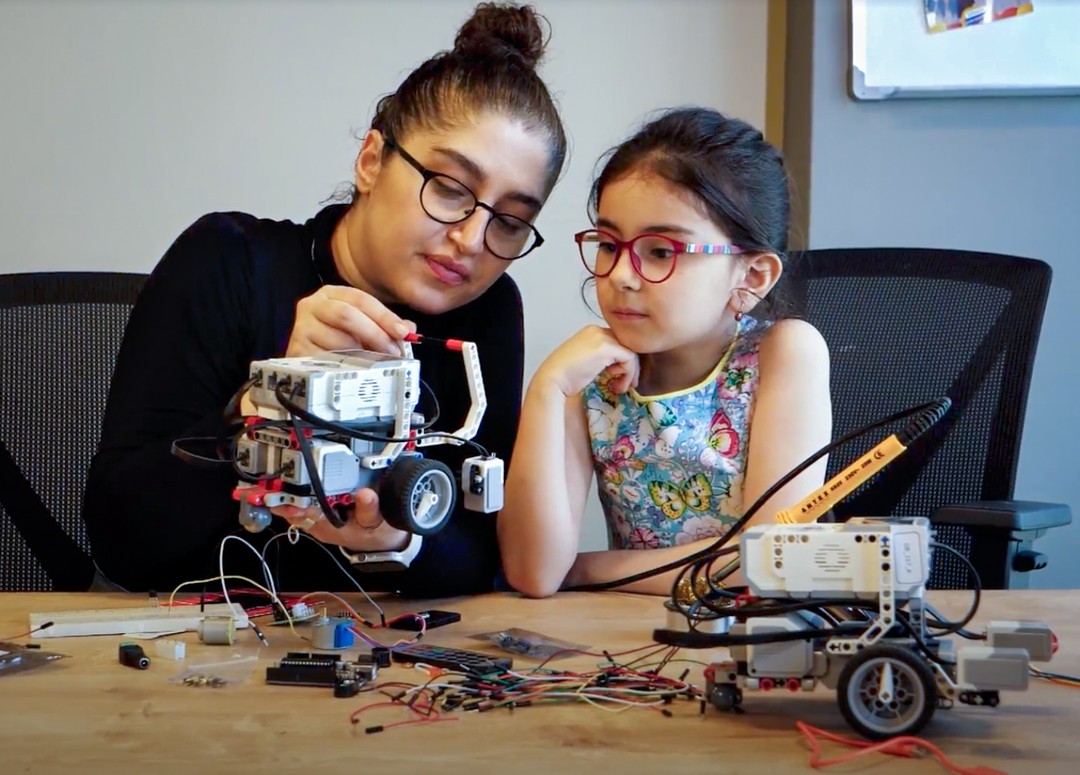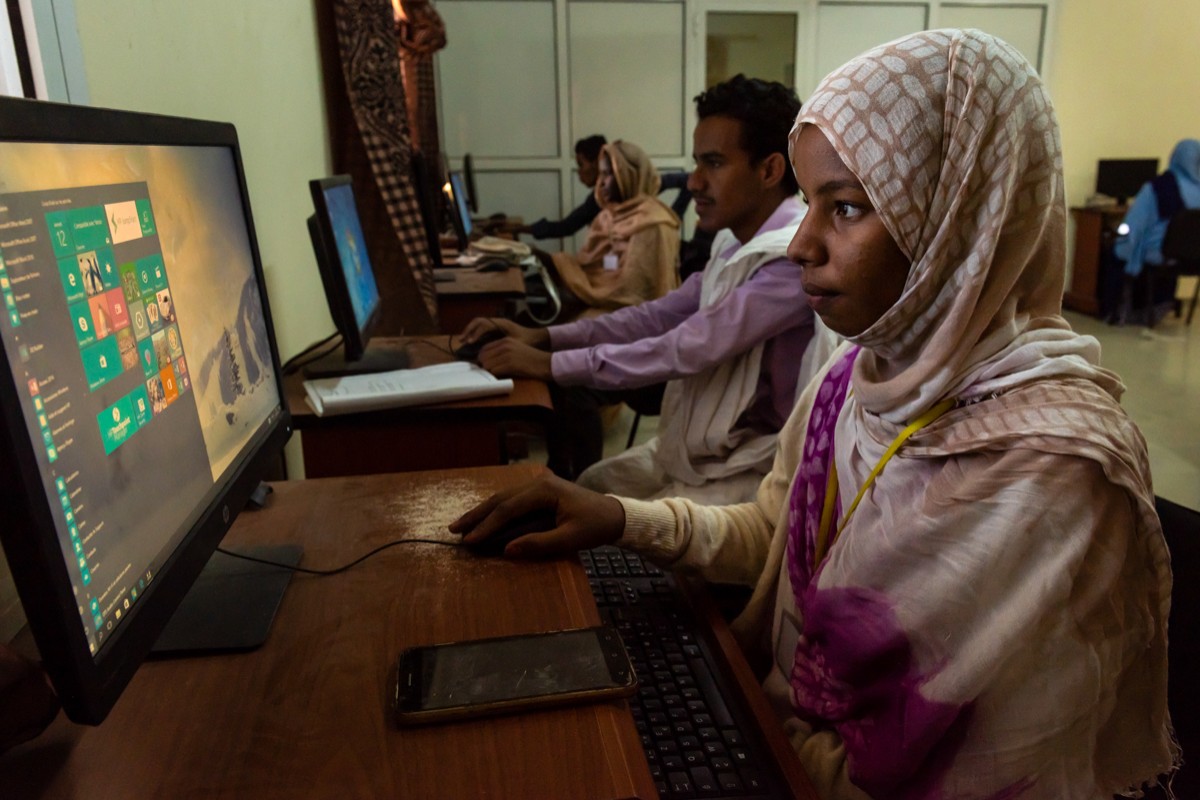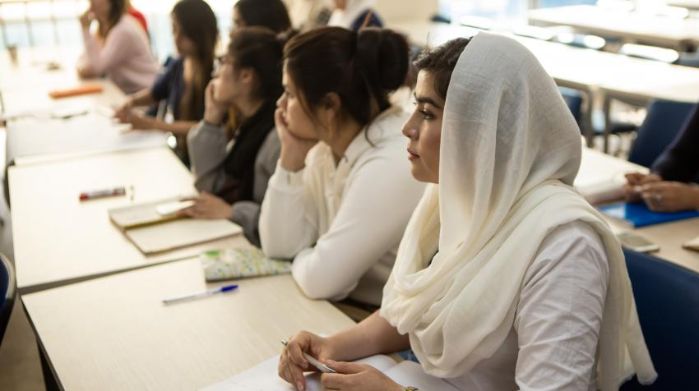Toward an equitable digital future: women and girls as active agents of change in digitalisation
December 9, 2021

The COVID-19 pandemic is accelerating global digital transformation, with people increasingly working, buying and selling goods, and socialising online. This creates new opportunities but also new challenges, threatening to leave women and girls even further behind.
Even before the pandemic, women had less access to the internet than men, and they were less likely to develop the skills to reap the benefits of digital tools and technologies. This is known as the gender digital divide. In low- and middle-income countries, for example, where mobile phones are the primary way people access the internet, women are 20% less likely than men to own a smartphone. In addition, limited access to STEM, inherent biases in the development of digital tools, and an alarming increase rate in gender-based harassment and violence online are widening gender inequalities.
Bridging the gender digital divide
Digital technologies can be a powerful driver of gender equality. Yet embedded design flaws across digital platforms threaten the safety, political participation, and technological input of women and girls – over half the world’s population.
In 2019, UNDP embarked on a digital transformation journey to respond more effectively to development challenges. A foundational element of this work is to ensure whole-of-society, equal access to digital. To do that, UNDP works with our partners to develop products and guidance on identifying and measuring the gender digital divide, and making digital interventions gender responsive. Take, for example, the COVID-19 Global Gender Response Tracker, created by UNDP and UN Women to monitor national pandemic response measures that directly address womens’ economic and social security -- including unpaid care work and the labour market -- as well as violence against women.
Expanding women’s access to digital services – like digital financial services – is essential for future economic growth in developing and developed economies alike. While progress has been made – the number of women with an online bank account or mobile money service increased by more 240 million according to the G20 Global Partnership for Financial Inclusion (GPFI) – more work needs to be done, and it requires cross-sectoral collaboration.
Ensuring safe access to women and girls in the online world

Concerns around data safety and threat of online harassment present major barriers to women’s access to digital services. In Latin America, the potential for harassment and privacy breaches has been cited as one of the major barriers to women’s access to digital services, particularly in Guatemala and Mexico. Harassment is also a major barrier in Africa; in South Africa, 22% of women have reported harassment online.
UNDP offices across the world are developing locally tailored tools to help women recognise, report, and recover from online abuse. In Kyrgyzstan, UNDP has supported the development of the chatbot Mildet, which enables women to identify signs of psychological and financial abuse online. In Kosovo, with support from Norway, UNDP launched a campaign entitled ‘Careful on the Internet!’, which brings together cybersecurity professionals, members of civil society, and concerned citizens to raise awareness around internet safety.
Developing digital products that take into account the needs of women and girls
Digital as a concept is gender agnostic. But to a great extent, the workforce behind digital continues to be male dominated.
One reason is women’s low participation in STEM. Girls make up only 35% of science, technology, engineering, and mathematics students. Moving forward, it is imperative that we create more room for women in the development of science and technology – especially ICT. Building digital literacy can be transformational and is key to closing the gender digital divide. In Europe and Central Asia, UNDP is working to advance gender equality with STEM4ALL, a platform that nurtures an enabling ecosystem to build more inclusive, innovative, and productive businesses in STEM sectors.
Another reason is the lack of understanding of the different experiences of men and women in technology design and use. We must ensure that the needs, priorities, and values of women are more effectively reflected in the digital environment, through the development of women-centric tools like the Ajeevika mobile app. In India, the app has connected 100,000 rural women to groups that help them access government security schemes, training, and healthcare information.
Elevating and safeguarding diverse voices in the digital public square

Interventions must be carefully localised in their planning, and strategically implemented so as to give women and girls from a variety of backgrounds the best opportunities to use digital to design their futures. Globally, women and girls, especially those from ethnic minority or indigenous backgrounds, are more likely to work service industry jobs, domestic and care sector jobs, and jobs outside the formal economy. This means that women generally have less independence, less free time, and less job stability. In Latin America and the Caribbean, UNDP’s Regional Hub and UN Women analysed measures adopted by governments to determine the extent to which they recognize, make visible, and focus on the impacts of COVID-19 in the lives of women and girls. The goal is to help policymakers make informed decisions about care redistribution between genders.
As we commemorate the final days of the 16 Days of Activism against Gender-Based Violence, it is important that we continue to work on making technology gender-inclusive and ensuring it is safe for all to use. Only in this way will we achieve the ambitious goals in our 2030 Agenda for people and planet.

 Locations
Locations


